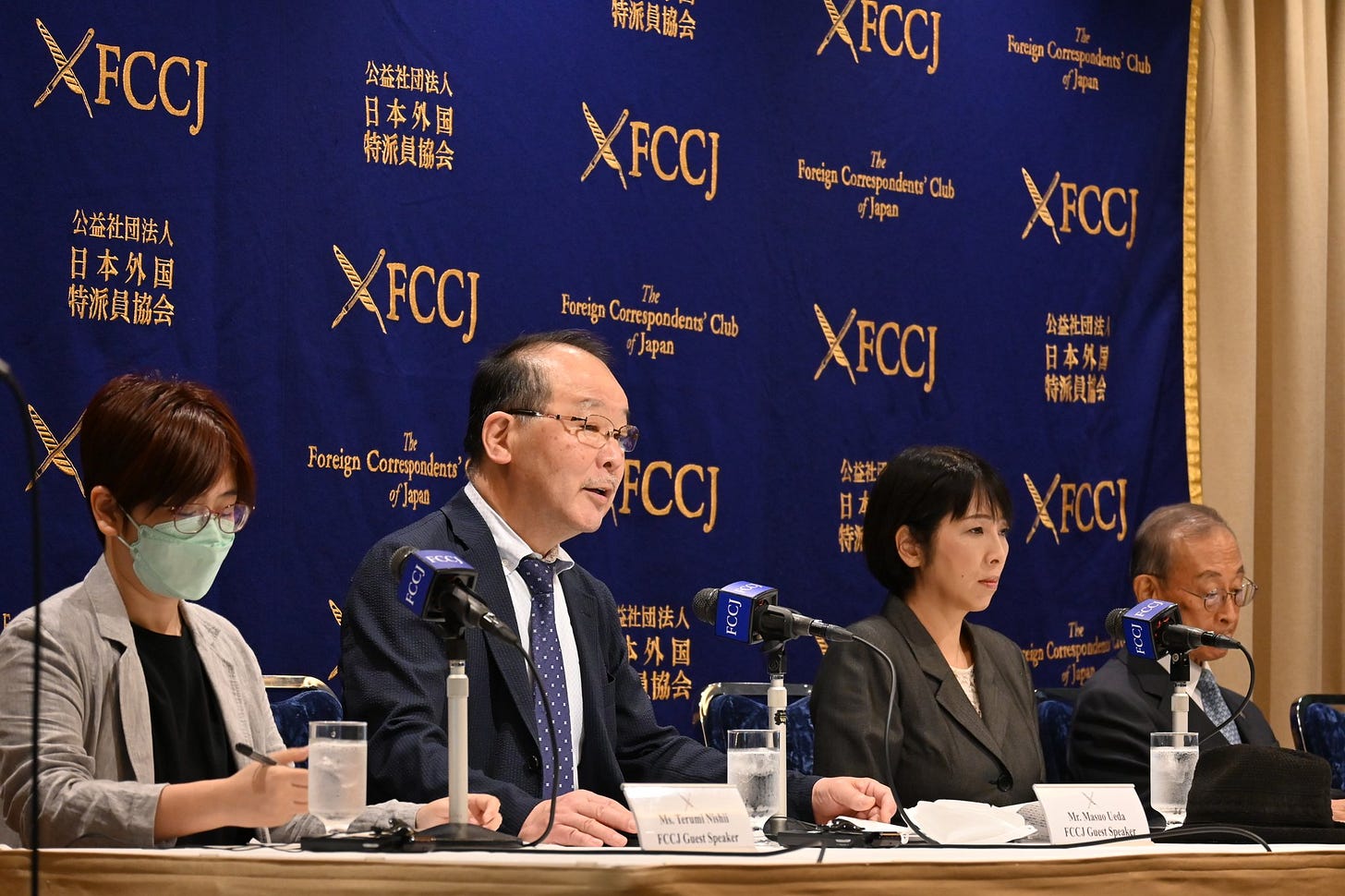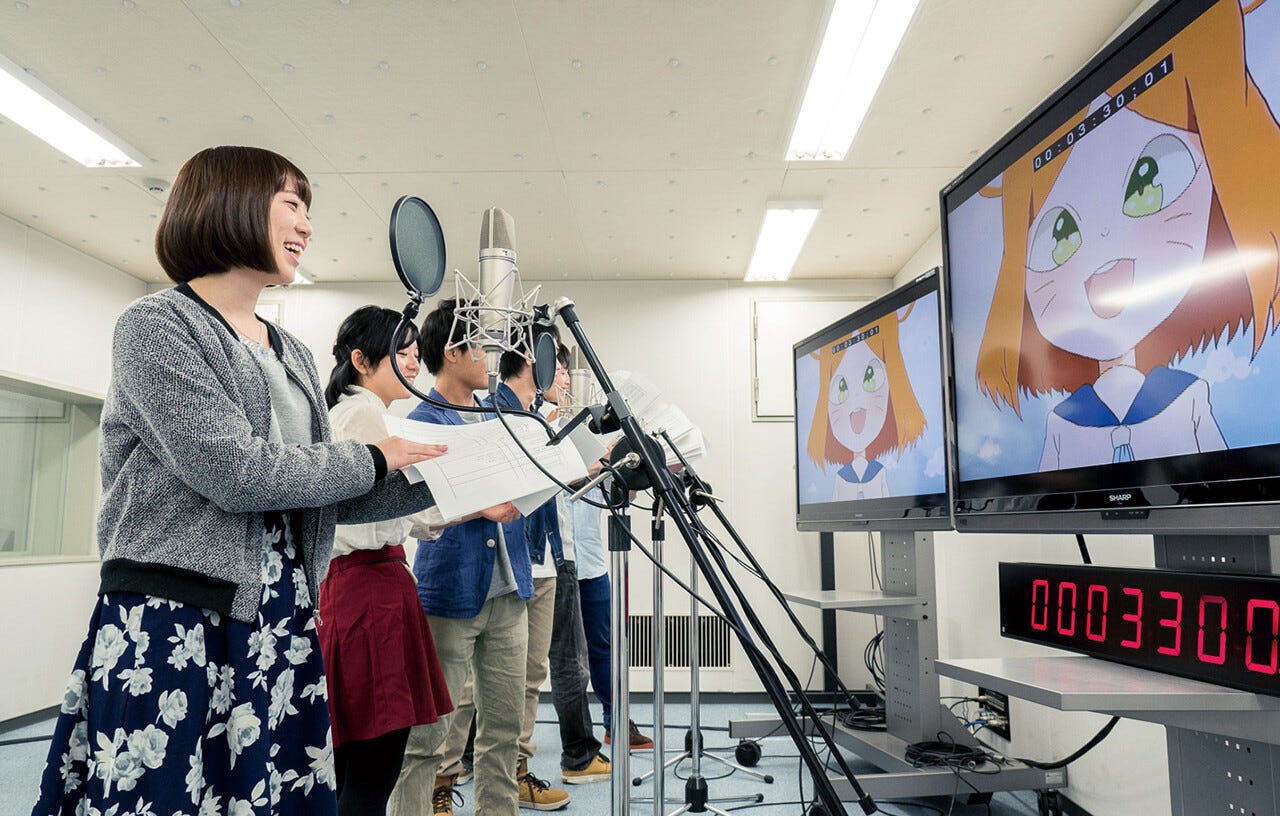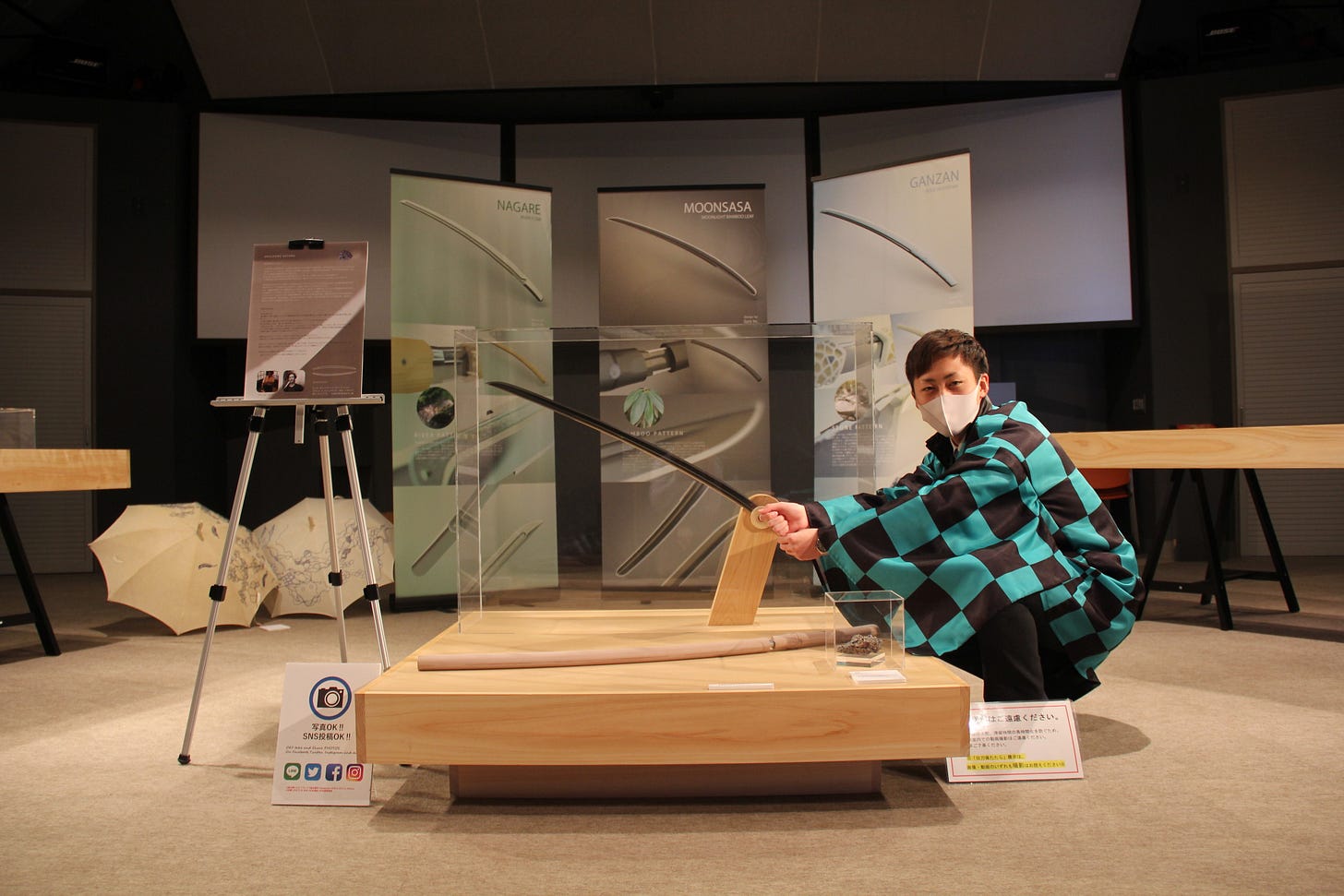Japan's consumption tax reform adds pressure on anime, manga workers
Plus: Stagnant wages in the anime voice acting profession; 'Demon Slayer' swords' tourism appeal; Crunchyroll's purpose for the anime industry; and more
This is your weekly Animenomics briefing, covering the business of anime and manga. Today is Wednesday, June 28, 2023.
In case you missed it: Tomokatsu Nagasaku, an animator at anime studio Kinema Citrus who has also worked at Disney, tweeted a comparison of how American artists using full animation draw differently from the Japanese limited animation style.
New tax rules create crisis for anime, manga workers

Changes to Japan’s consumption tax reporting requirements, set to take effect in October, will drive many anime and manga freelance workers into bankruptcy, says a coalition of industry professionals organizing under the name Stop Invoice.
Driving the story: In a press conference held at the Foreign Correspondents’ Club of Japan last week, representatives of the coalition put a spotlight on the potential negative impacts of the national tax agency’s new qualified invoice system.
Watch: A recording of the press conference with simultaneous interpretation in English is available on YouTube.
Backgrounder: Since 1989, Japan has charged a consumption tax on the price of goods and services sold in the country, similar to the value-added tax (VAT) used in many European countries.
This tax is paid by the businesses providing the goods and services, but is usually passed on to consumers, making it an indirect tax.
Japan’s consumption tax rate was last raised from 8 percent to 10 percent in 2019, but the VAT has been seen to go as high as 27 percent in Hungary.
What’s changing: A consumption tax exemption for businesses with annual sales of less than ¥10 million (US$70,000), in effect since 2004, is going away.
Most anime and manga workers, including but not limited to animators, manga artists, and voice actors, earn below the threshold and operate as sole proprietors or are hired by studios and publishers as freelancers.
Under the new system, companies that hire subcontractors who fall under the sales threshold must bear the collective tax burden of both parties unless the hired resource issues the hiring party a qualified invoice.
To produce a qualified invoice, the sole proprietor must register with the tax agency, automatically subjecting it to the 10 percent consumption tax.
What’s at risk: A survey of creators in the anime and manga industries found that 30 percent of respondents say they might go out of business under the qualified invoice system. “It’s a horrible number,” says anime producer Masuo Ueda.
Many rookie professionals, such as in-between animators, manga assistants, and new voice actors, already take on a second job to make a living and can’t afford a 10 percent pay reduction, let alone hire an accountant to manage the administrative work of producing invoices.
Some anime studios, especially smaller ones, can’t afford an increased tax burden and could choose to hire only animators registered to issue qualified invoices. As reported by Animenomics last month, studios today report only a 5 percent profit margin for the average anime series.
Zoom out: Manga artist Ken Akamatsu, who serves in parliament, is negotiating with the tax agency to address additional concerns like access to details about a registered business to protect the identity of pseudonymous artists.
Yes, but: “The Japanese government is contradictory,” says French journalist Karyn Nishimura, who is married to a manga artist. “Abroad, it promotes the idea of Cool Japan, that anime, manga, films, and other Japanese products are amazing, but what’s happening is the bullying of talent on the ground without any understanding of the industry.”
How it might play out: Nothing may change for studios in the immediate future given the current animator shortage.
“To maintain an amicable relationship with animators, even with the launch of the invoice system, I do hear that they intend to maintain the status quo,” Ueda admits.
The invoice system will be phased in over a six-year period before companies begin to bear 100 percent of the tax burden of unregistered entities, giving studios time to formulate a strategy.
Voice actor wages remain stagnant amid anime boom

For anime’s celebrated voice actors, there is growing dissatisfaction with stagnant wages for jobs in the industry. A survey conducted last year by the voice actor advocacy group Voiction found that one in two respondents in their 20s and 30s earned less than ¥1 million (US$7,000) annually.
Why it matters: Voice actors’ pay rates in the anime industry are significantly less than those for video games, and the recording sessions for a video game are much shorter than that of anime.
Hiroshi Matsuyama, CEO of the CyberConnect2 video game studio known for work on the .hack series, told voice actor Atsuko Enomoto in an interview that the voice actor rate his studio pays to sound production companies are on average four to five times the anime industry pay rate.
Some necessary context: Japan’s voice acting industry applies a ranking system, and an actor’s rank determines the size of their payment for each appearance.
According to a recent report by the Weekly Toyo Keizai business and finance magazine, a junior voice actor is paid on average ¥15,000 (US$105) for each anime episode appearance for the first three years of their career.
Voice actors interviewed also told the magazine that it isn’t uncommon for them to endure sexual harassment to curry favor with producers.
Among anime films, Matsuyama says there is a growing number of cases where voice actors don’t receive a windfall even if the film succeeds in the international box office.
Between the lines: Enomoto and Matsuyama admit that the ranking system was created with good intentions so that veteran actors are rewarded, but they agree that the system has become dysfunctional.
Because anime’s quality expectations have climbed so high, much of the increased production costs have gone to animator retainer fees and not to other parts of the production process.
Clippings: ‘Demon Slayer’ gives swordsmiths an edge

Demon Slayer’s popularity is generating renewed interest in Japanese swords. One swordsmith opened his workshop to visitors, many who are young women and foreign tourists, interested in learning about the forging process. (The Mainichi)
A Philippine live-action adaptation of Voltes V is reviving memories of the 1970s anime’s ties with the country’s politics. Toei collaborated with broadcaster GMA Network to produce the series as part of an effort to develop its intellectual properties overseas. (Nikkei Asia)
Viz Media will raise prices on manga volumes distributed in North America next year, the first time it will have done so in 15 years. Its prices will remain cheaper than those of other manga publishers and distributors in the region. (ICv2)
Advertising giant Dentsu is forming a new anime licensing subsidiary to help its clients distribute anime titles to domestic and international broadcasters and sell copyright licenses to merchandisers. (Press release)
In a partnership with Audible, Amazon’s audiobook service, TMS Entertainment will release three Lupin the Third anime titles as audio-only podcasts featuring the franchise’s current voice actors. (ASCII Digital)
Crunchyroll’s United Kingdom subsidiary, formerly Manga Entertainment, has hired Way To Blue as its public relations agency. Among the firm’s clients are Sony Pictures UK and Hideo Kojima’s video game studio. (Little Black Book)
Journalist: Sony has unique purpose for Crunchyroll

A new opinion piece published last week by journalist Yumiko Watanabe argues that Sony’s acquition of Crunchyroll nearly two years ago has the goal of creating added value for the anime industry.
Why it matters: Crunchyroll’s acquisition is the culmination of a transformation in the anime industry that began in the 1980s.
Throughout the 1980s and 1990s, foreign companies viewed anime as a product that could be bought cheaply and edited and modified according to their own needs locally.
That sentiment changed with the explosion of Pokémon’s popularity in the United States in 1999, and gradually anime became a desirable product.
One big thing: Watanabe points specifically to the Crunchyroll Anime Awards, held annually since 2017, as the singular reason the acquisition enhances the economic value of the anime industry.
“In Japan, awards are perceived to be based on the performance of the work, but the basis of awards in Europe and the United States in my view is to honor the person and to confer authority to the work,” she writes.
Authority raises the value of the work and the creator. In the United States, for example, ticket prices of Broadway musicals have been shown to spike in the month after winning the year’s Tony Award for Best Musical.
Yes, but: Watanabe notes awards can and do become a corporate tool to drive brand recognition rather than a genuine affirmation of merit.
One benefit for producers of anime is that by treating creators like celebrities anime can be promoted not as a niche product for children, but also for adults.
Such treatment can also affect public perception of anime work, making it more appealing to outside talent, thus alleviating the talent shortage.
Thanks for reading to the end. This week’s business briefing is our longest newsletter yet. If you found this content on the anime industry insightful, consider sharing it with others to spread the word about our work.


